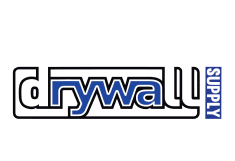[ad_1]
Drywall corner beads are used to protect the corners of drywall from damage and create a clean, professional look. They are available in a variety of materials and styles, each offering different benefits depending on the project at hand. In this guide, we will explore the ins and outs of drywall corner bead, including its purpose, types, installation process, and maintenance tips.
Purpose of Drywall Corner Bead
The primary purpose of drywall corner bead is to protect the corners of drywall from damage. Without corner bead, the corners of drywall are susceptible to cracks, chips, and other forms of wear and tear that can compromise the structural integrity of the wall. Additionally, corner bead helps to create a smooth, uniform surface that is easier to paint and finish.
Corner bead also serves an aesthetic purpose, helping to create a clean, professional look. By covering the rough edges of the drywall, corner bead can enhance the overall appearance of a room and give it a more polished finish.
Types of Drywall Corner Bead
There are several types of drywall corner bead available, each offering different benefits depending on the project at hand. The most common types of corner bead include:
- Metal corner bead: Metal corner bead is the most common type of corner bead and is available in both standard and flexible varieties. Metal corner bead is durable and provides excellent protection for corners, making it ideal for high-traffic areas.
- PVC corner bead: PVC corner bead is a lightweight, flexible option that is easy to work with. It is resistant to rust and corrosion, making it a good choice for humid environments such as bathrooms and kitchens.
- Paper-faced corner bead: Paper-faced corner bead is a budget-friendly option that is easy to install. It is not as durable as metal or PVC corner bead, making it best suited for areas with low traffic.
Installation Process
The installation process for drywall corner bead is relatively straightforward and can be completed by DIYers with basic tools and skills. Here is a step-by-step guide to installing drywall corner bead:
- Cut the corner bead to the desired length using tin snips or a hacksaw.
- Apply a thin layer of joint compound to the corner of the drywall where the corner bead will be installed.
- Press the corner bead into place, ensuring it is straight and aligned with the corner of the wall.
- Secure the corner bead with drywall screws or nails, making sure to space them evenly along the length of the bead.
- Apply a second coat of joint compound over the corner bead, smoothing it out with a drywall knife.
- Allow the joint compound to dry completely before sanding the surface smooth and applying paint or wallpaper.
Maintenance Tips
To ensure the longevity of your drywall corner bead, it is important to properly maintain it. Here are some maintenance tips to keep in mind:
- Inspect the corner bead regularly for signs of damage, such as dents, cracks, or rust.
- Repair any damage to the corner bead promptly to prevent further issues.
- Clean the corner bead regularly with a mild detergent and water to remove dirt and grime.
- Touch up any scratches or chips in the corner bead with paint or touch-up compound.
FAQs
1. How do I repair a damaged drywall corner bead?
To repair a damaged drywall corner bead, start by carefully removing the damaged section of the bead using a utility knife or hacksaw. Cut a new piece of corner bead to size and secure it in place with drywall screws or nails. Apply joint compound over the repair area, feathering it out to blend with the surrounding wall. Allow the joint compound to dry completely before sanding the surface smooth and applying paint or wallpaper.
2. Can I install drywall corner bead over existing corner bead?
While it is possible to install new corner bead over existing corner bead, it is not recommended. Doing so can create uneven surfaces and compromise the structural integrity of the wall. It is best to remove the existing corner bead before installing a new one to ensure a clean, professional finish.
Overall, drywall corner bead is an essential component of any drywall installation, providing both protection and aesthetic enhancement. By understanding the different types of corner bead available, the installation process, and maintenance tips, you can ensure the longevity and durability of your walls for years to come.
[ad_2]


